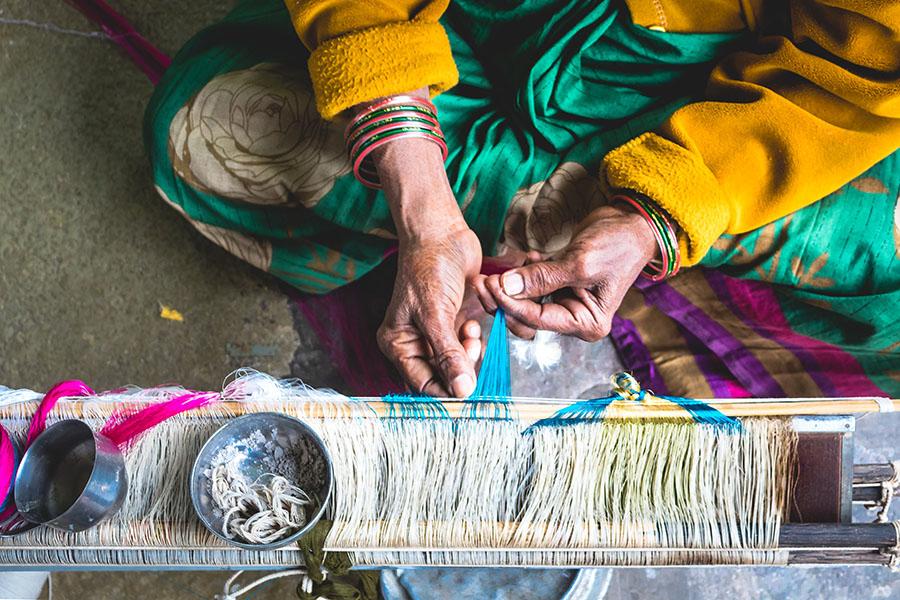[ad_1]
/>
Unless you’re a textile enthusiast, chances are you haven’t heard of Pochampally, a small village in Telangana known for its exquisite Ikat designs—especially on silk saris. In 2021, the village carved a larger niche for itself as ‘one of the best tourism villages’ according to the United Nations World Tourism Organisation (UNWTO). Telangana tourism expects tourist footfall to increase by 20-30 percent in the coming years, thanks to this recognition.
While Pochampally deservedly basks in its new-found glory, many villages in India have much to offer their visitors. Our villages are a treasure trove of indigenous cultures, beautiful landscapes, delectable cuisine, rich arts and crafts, and so much more—best experienced through the eyes and ears of the local communities. They make for refreshing alternatives to the urban traveller seeking authentic experiences—especially in the post-Covid world that has replaced commercial tourism with conscious, responsible and immersive travel.
Rural tourism can facilitate a harmonious exchange between the urban and the rural in a way that enriches both communities. Here’s why we must work to create a seamless passage between the two:
Create economic opportunities which help curb migration
Any slice of rural life is best savoured through the shared experience of the local community. From playing hosts at local homestays and offering authentic meals to being local guides for treks and camps, there are so many economic opportunities created with these unique travel locations. The Rajasthan state cabinet recently approved a Rural Tourism Scheme specifically with the larger goal of boosting the local economy and generating employment. The scheme offers multiple exemptions and incentives to local entrepreneurs, with the aim of job creation and curbing migration of communities to the cities.
Also Read- Fun and Games: How sports tourism is picking up pace in India
Boost farm incomes
More than 50 percent of rural India makes a living out of agriculture and allied activities. Yet, so many of us city slickers have no access to this defining lifestyle. Rural tourism is an excellent way to get a taste of the charming Indian farm life with farmlands associated with rural tourism programmes—such as the one initiated by the Madhya Pradesh Tourism Board. It allows one to live on a farm, stay in authentic homes built in the traditional style, give a hand to the local farmer in the fields and very importantly, savour some farm-fresh ingredients cooked in authentic local style, seated under the shade of a spreading farm tree. Not only does this make for a priceless experience, but it also helps farmers diversify their income through farm activity. MP’s Ladhpura Khas near Orchha was one of the three villages nominated for the “Best Tourism Villages” by the UNWTO. The third one is Kongthong, known as the whistling villages in Meghalaya.
Preserve arts, crafts, and culture
Most indigenous arts and cultures in India are a precious legacy passed down over generations. The lack of awareness and platforms to showcase these discourage the younger generation from pursuing the age-old cultural legacies. But these can get a much-needed fillip if made accessible to the new generation of mindful travellers who understand their value. Bamboo and cane craft in Arunachal Pradesh, Madhubani in Bihar, Warli in Maharashtra, Pattachitra in Odisha, and Dokra in West Bengal—the list is endless.
Support infrastructure
Recognising its potential, the Ministry of Tourism, in 2021, formulated a National Strategy and Roadmap for the Development of Rural Tourism in India, which includes upgrading our villages’ digital, social, and physical infrastructure. Creation of an eco-system conducive to the flourishing of a destination thus ensures that the perks of development reach grassroots communities that otherwise don’t feature high on the administration’s radar.
Offer an authentic, mindful experience for the visitor
For those of us who want to shake off city life and find solace in the slow-paced country setting, rural tourism opens up a world of home-grown experiences. It allows one to experience unparalleled hospitality and a rare opportunity to connect with the local people, food, culture, craft, and landscape. It allows you to immerse yourself—if only for a brief period—into the quintessential Indian village life.
Create pride in the minds of village communities
Perhaps the most important factor is the immense pride felt by the local community, who are, in essence, offering the best of their lifestyle to others. This allows them to see their own values, traditions and culture as something worth preserving.
The pandemic has made us rethink our ways of living and exploring. The travel industry, slowly recovering from its blow, is expected to reach $250 billion in India by 2030 and the path to that must take from the learnings of the past years. The National Conference of State Tourism Ministers held in Dharamshala in September 2022 affirmed through the Dharamshala Declaration’ its commitment to developing “sustainable and responsible and inclusive tourism.” It pledged to embody the philosophy of ‘Ek Bharat Shrestha Bharat’ that would encourage more Indians to travel to the hinterlands and experience the nature and culture of rural India.
It is a goal that travellers, the tourism industry, governments, NGOs and local communities must collectively and mindfully nurture.
The writer is the co-founder of the Swades Foundation & works full-time as its Managing Trustee & Director.
The thoughts and opinions shared here are of the author.
Check out our end of season subscription discounts with a Moneycontrol pro subscription absolutely free. Use code EOSO2021. Click here for details.
[ad_2]
Source link









